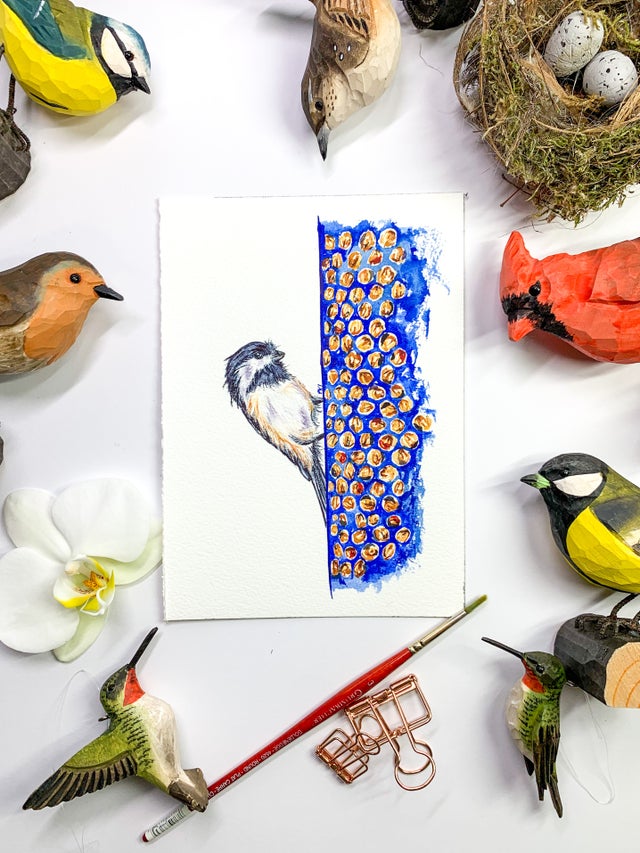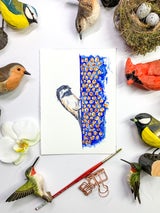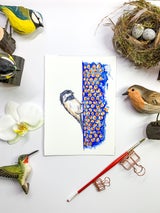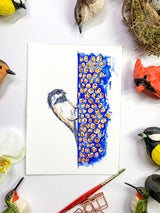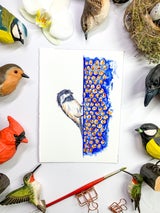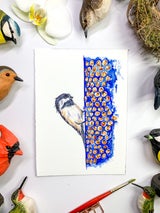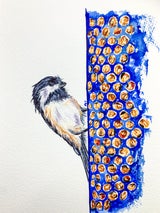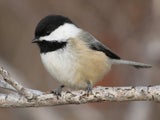ORIGINAL Watercolor Black-Capped Chickadee
ORIGINAL Watercolor Black-Capped Chickadee
€35/$45
There are all kinds of bird enthusiasts out there. Some are bird watchers, some bird owners, and some of those who love to feed backyard birds. If you’ve got a bird loving friend or family member then why not treat them to a special gift that they will really appreciate and enjoy.
Light up your room or their's with this original watercolor painting of a Black-Capped Chicadee. I hope you enjoy this very personal and meaningful artwork!
SIZE: 5x7
SIGNED: by the artist
MEDIA: watercolor on paper
FRAMING: NOT included
About the Bird
A bird almost universally considered “cute” thanks to its oversized round head, tiny body, and curiosity about everything, including humans. The chickadee’s black cap and bib; white cheeks; gray back, wings, and tail; and whitish underside with buffy sides are distinctive. Its habit of investigating people and everything else in its home territory, and quickness to discover bird feeders, make it one of the first birds most people learn.
Backyard Tips
Chickadees are one of the easiest birds to attract to feeders, for suet, sunflower, and peanuts. They don’t mind using tiny hanging feeders that swing in the wind, and also readily visit window feeders. Planting willow, alder, and birch trees provides future nesting habitat for chickadees.
Feeders and nest boxes are often used by chickadees; consider putting up a nest box to attract a breeding pair. Make sure you put it up well before breeding season. Attach a guard to keep predators from raiding eggs and young. Black-capped Chickadees are especially attracted to a box when it is filled with sawdust or wood shavings. To keep wrens out of boxes you want chickadees to nest in, place nest boxes at least 60 feet into a wooded area. The compass orientation of the entrance hole probably does not matter at all, but chickadees do seem to prefer an unobstructed path to the entrance hole, without branches and leaves in the way. Setting a nest box farther back from other trees and branches can help deter squirrels and mice from jumping to the box and eating chickadee eggs and nestlings.

